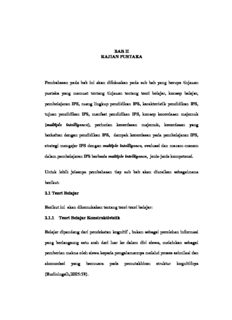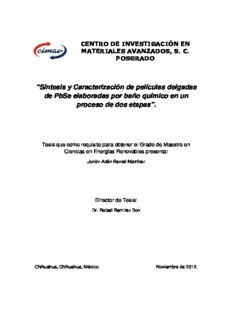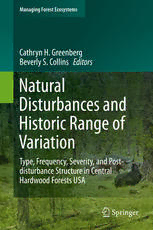
Natural Disturbances and Historic Range of Variation: Type, Frequency, Severity, and Post-disturbance Structure in Central Hardwood Forests USA PDF
Preview Natural Disturbances and Historic Range of Variation: Type, Frequency, Severity, and Post-disturbance Structure in Central Hardwood Forests USA
Managing Forest Ecosystems Cathryn H. Greenberg Beverly S. Collins Editors Natural Disturbances and Historic Range of Variation Type, Frequency, Severity, and Post- disturbance Structure in Central Hardwood Forests USA Managing Forest Ecosystems Volume 32 Series Editors Klaus von Gadow , Georg-August-University , Göttingen , Germany Timo Pukkala , University of Joensuu , Joensuu , Finland Margarida Tomé , Instituto Superior de Agronomía , Lisbon , Portugal Aims & Scope Well-managed forests and woodlands are a renewable resource, producing essential raw material with minimum waste and energy use. Rich in habitat and species diversity, forests may contribute to increased ecosystem stability. They can absorb the effects of unwanted deposition and other disturbances and protect neighbouring ecosystems by maintaining stable nutrient and energy cycles and by preventing soil degradation and erosion. They provide much-needed recreation and their continued existence contributes to stabilizing rural communities Forests are managed for timber production and species, habitat and process conservation. A subtle shift from m ultiple-use management to ecosystems management is being observed and the new ecological perspective of m ulti- functional forest management is based on the principles of ecosystem diversity, stability and elasticity, and the dynamic equilibrium of primary and secondary production. Making full use of new technology is one of the challenges facing forest management today. Resource information must be obtained with a limited budget. This requires better timing of resource assessment activities and improved use of multiple data sources. Sound ecosystems management, like any other management activity, relies on effective forecasting and operational control. The aim of the book series M anaging Forest Ecosystems is to present state-of- the-a rt research results relating to the practice of forest management. Contributions are solicited from prominent authors. Each reference book, monograph or proceedings volume will be focused to deal with a specifi c context. Typical issues of the series are: resource assessment techniques, evaluating sustainability for even- aged and uneven-aged forests, multi-objective management, predicting forest development, optimizing forest management, biodiversity management and monitoring, risk assessment and economic analysis. More information about this series at h ttp://www.springer.com/series/6247 Cathryn H. Greenberg (cid:129) Beverly S. Collins Editors Natural Disturbances and Historic Range of Variation Type, Frequency, Severity, and Post-d isturbance Structure in Central Hardwood Forests USA Editors Cathryn H. Greenberg Beverly S. Collins USDA Forest Service, Southern Research Biology Department Station, Bent Creek Experimental Forest Western Carolina University Asheville , NC , USA Cullowhee , NC , USA ISSN 1568-1319 ISSN 2352-3956 (electronic) ISBN 978-3-319-21526-6 ISBN 978-3-319-21527-3 (eBook) DOI 10.1007/978-3-319-21527-3 Library of Congress Control Number: 2015953434 Springer Cham Heidelberg New York Dordrecht London © Springer International Publishing Switzerland (outside the USA) 2016 © Chapter 13, US Government T his contribution has been authored by UT-Battelle, LLC under Contract No. DE-AC05-0 0OR22725 with the US Department of Energy. The United States Government retains and the publisher, by accepting the article for publication, acknowledges that the United States Government retains a non-exclusive, paid-up, irrevocable, world-wide license to publish or reproduce the published form of this manuscript, or allow others to do so, for United States Government purposes. The Department of Energy will provide public access to these results of federally sponsored research in accordance with the DOE Public Access Plan ( h ttp://energy.gov/downloads/doe-public-access-plan ) . © Springer International Publishing Switzerland 2016 T his work is subject to copyright. All rights are reserved by the Publisher, whether the whole or part of the material is concerned, specifi cally the rights of translation, reprinting, reuse of illustrations, recitation, broadcasting, reproduction on microfi lms or in any other physical way, and transmission or information storage and retrieval, electronic adaptation, computer software, or by similar or dissimilar methodology now known or hereafter developed. T he use of general descriptive names, registered names, trademarks, service marks, etc. in this publication does not imply, even in the absence of a specifi c statement, that such names are exempt from the relevant protective laws and regulations and therefore free for general use. T he publisher, the authors and the editors are safe to assume that the advice and information in this book are believed to be true and accurate at the date of publication. Neither the publisher nor the authors or the editors give a warranty, express or implied, with respect to the material contained herein or for any errors or omissions that may have been made. Printed on acid-free paper Springer International Publishing AG Switzerland is part of Springer Science+Business Media (www. springer.com) Pref ace T his edited volume addresses the historic range of variation (HRV) in types, fre- quencies, severities, and scales of natural disturbances, and how they create hetero- geneous structure within upland hardwood forests of Central Hardwood Region (CHR). The idea for this book was partially in response to a new (2012) forest plan- ning rule which requires national forests to be managed to sustain ‘ecological integ- rity’ and within the ‘natural range of variation’ of natural disturbances and vegetation structure. This new mandate has brought to the forefront discussions of HRV (e.g., what is it?) and whether natural disturbance regimes should be the primary guide to forest management on national forests and other public lands. Natural resource professionals often seek ‘reference conditions,’ based on HRV, for defi ning forest management and restoration objectives. A large body of literature addresses changes in forest structure after natural disturbance, but most studies are limited to a specifi c site, disturbance event, forest type, or geographic area. Several literature reviews address a single natural disturbance type within a limited geographic area (often not the CHR), but do not address others or how their importance may differ among ecoregions. Synthesizing information on HRV of natural disturbance types, and their impacts on forest structure, has been identifi ed as a top synthesis need. Historically, as they are today, natural (non-anthropogenic) disturbances were integral to shaping central hardwood forests and essential in maintaining diverse biotic communities. In addition to a ‘background’ of canopy gaps created by single tree mortality, wind, fi re, ice, drought, insect pests, oak decline, fl oods, and land- slides recurringly or episodically killed or damaged trees, at scales ranging from scattered, to small or large groups of trees, and across small to large areas. Additionally, some animals, such as beavers, elks, bisons, and perhaps passenger pigeons, functioned as keystone species by affecting forest structure and thus habi- tat availability for other wildlife species. Prehistoric anthropogenic disturbances – fi re and clearing in particular – also infl uenced forest structure and composition throughout much of the CHR and therefore the distribution of disturbance-d ependent wildlife species. The spatial extent, frequencies, and severities differed among these natural disturbance types and created mosaics and gradients of structural conditions and canopy openness within stands and across the landscape. v vi Preface A full-day symposium, organized by the editors, at the 2014 Association of Southeastern Biologists conference in Spartanburg, South Carolina, was the basis for this book. Our goal was to present original scientifi c research and knowledge synthesis covering major natural disturbance types, with a focus on forest structure and implications for forest management. Chapters were written by respected experts on each topic with the goal of providing current, organized, and readily accessible information for the conservation community, land managers, scientists, students and educators, and others interested in how natural disturbances historically infl u- enced the structure and composition of central hardwood forests and what that means for forest management today. Chapters in this volume address questions sparked by debated and sometimes controversial goals and ‘reference conditions’ in forest management and restoration, such as the following: What was the historic distribution, scale, and frequency of different natural disturbances? What is the gradient of patch sizes or level of tree mortality conditions created by these disturbances? How do gradual disturbances such as oak decline, occurring over a long period of time and across a broad land- scape, differ in effects from discrete disturbances such as tornadoes? How does topography infl uence disturbance regimes or impacts? How do native biotic (insects or fungi, keystone wildlife species) and abiotic (precipitation, drought, temperature, wind, and soil) agents interact to alter disturbance outcomes? What was the diver- sity of age classes and gradient of forest structure created by natural disturbances alone? How might disturbance-adapted plants and animals have fared in the hypo- thetical historic absence of anthropogenic disturbances? How might climate change alter disturbance regimes and structure of upland hardwood forests in the future? And fi nally, should, and how, can land managers manage these forests within the HRV of natural disturbance frequencies, spatial extents, and gradient of conditions they create? We sincerely thank all those who encouraged and aided in the development of this book. Each chapter was peer-reviewed by at least two outside experts and both coeditors, and we thank these colleagues for their useful suggestions: Chris Asaro, Robert Askins, Francis Ashland, Bart Cattanach, Steven Croy, Kim Daehyun, Dianne DeSteven, Chris Fettig, Mark Harmon, Matthew Heller, Louis Iverson, John Kabrick, Tara Keyser, Scott Lecce, William MacDonald, Henry McNab, Manfred Mielke, Billy Minser, Scott Pearson, Duke Rankin, Jim Rentch, John Stanturf, Scott Stoleson, Ben Tanner, and Thomas Wentworth. We also thank the Association of Southeastern Biologists for allowing us to host a conference symposium on this important topic, and the National Forests of North Carolina for assistance with travel costs for speakers. We especially thank each author for contributing, and for timely chapter revisions, which made this book possible. Asheville , NC , USA Cathryn H. Greenberg Cullowhee , NC , USA Beverly S. Collins Contents 1 Introduction to Natural Disturbances and Historic Range of Variation: Type, Frequency, Severity, and Post-disturbance Structure in Central Hardwood Forests .......... 1 Cathryn H. Greenberg , Beverly S. Collins , W. Henry McNab , Douglas K. Miller , and Gary R. Wein 2 Gap-Scale Disturbances in Central Hardwood Forests with Implications for Management .......................................... 33 Justin L. Hart 3 Oak Decline in Central Hardwood Forests: Frequency, Spatial Extent, and Scale .................................................... 49 Steven W. Oak , Martin A. Spetich , and Randall S. Morin 4 Southern Pine Beetles in Central Hardwood Forests: Frequency, Spatial Extent, and Changes to Forest Structure ............. 73 John T. Nowak , Kier D. Klepzig , David R. Coyle , William A. Carothers , and Kamal J. K. Gandhi 5 First Steps Toward Defining the Wind Disturbance Regime in Central Hardwoods Forests ........................... 89 Chris J. Peterson , Jeffery B. Cannon , and Christopher M. Godfrey 6 Fire as a Once-Dominant Disturbance Process in the Yellow Pine and Mixed Pine-Hardwood Forests of the Appalachian Mountains .................................................. 123 Henri D. Grissino-Mayer 7 Ice Storms in Central Hardwood Forests: The Disturbance Regime, Spatial Patterns, and Vegetation Influences .......................... 147 Charles W. Lafon vii viii Contents 8 Multi-millennial Record of Erosion and Fires in the Southern Blue Ridge Mountains, USA ....................................... 167 David S. Leigh 9 Frequency and Magnitude of Selected Historical Landslide Events in the Southern Appalachian Highlands of North Carolina and Virginia: Relationships to Rainfall, Geological and Ecohydrological Controls, and Effects ....................... 203 Richard M. Wooten , Anne C. Witt , Chelcy F. Miniat , Tristram C. Hales , and Jennifer L. Aldred 10 Structural and Compositional Change in Great Smoky Mountains National Park since Protection, 1930s–2000s .................... 263 Julie P. Tuttle and Peter S. White 11 Disturbance, Productivity, and Tree Characteristics in the Central Hardwoods Region ......................................................... 295 Peter A. Wilfahrt , Peter S. White , Beverly S. Collins , and Julie P. Tuttle 12 The Historic Role of Humans and Other Keystone Species in Shaping Central Hardwood Forests for Disturbance-Dependent Wildlife ..................................................... 319 Cathryn H. Greenberg , Kendrick Weeks , and Gordon S. Warburton 13 Climate Change and the Future of Natural Disturbances in the Central Hardwood Region ........................................................... 355 Virginia H. Dale , M. Joseph Hughes , and Daniel J. Hayes 14 Managing Central Hardwood Forests Within the Context of the Historic Range of Variability (HRV): Challenges and Opportunities ............................................................... 371 Eric K. Zenner Index ................................................................................................................. 393 Contributors Jennifer L. Aldred Department of Geography and Earth Sciences , University of North Carolina at Charlotte , Charlotte , NC , USA Jeffery B. Cannon Department of Plant Biology , University of Georgia , Athens , GA , USA William A. Carothers USDA Forest Service, Forest Health Protection , Asheville , NC , USA Beverly S. Collins Department of Biology , Western Carolina University , Cullowhee , NC , USA David R. Coyle D.B. Warnell School of Forestry and Natural Resources , University of Georgia , Athens , GA , USA Virginia H. Dale Environmental Sciences Division , Oak Ridge National Laboratory , Oak Ridge , TN , USA Kamal J. K. Gandhi D.B. Warnell School of Forestry and Natural Resources , University of Georgia , Athens , GA , USA Christopher M. Godfrey Department of Atmospheric Sciences , University of North Carolina at Asheville , Asheville , N C , USA Cathryn H. Greenberg U SDA Forest Service, Southern Research Station, Bent Creek Experimental Forest , Asheville , NC , USA Henri D. Grissino-Mayer Department of Geography , The University of Tennessee, Knoxville , TN , USA Tristram C. Hales Hillslope Geomorphology , School of Earth and Ocean Sciences, Cardiff University , Cardiff , UK Justin L. Hart Department of Geography and Program in Environmental Science , University of Alabama , Tuscaloosa , AL , USA ix
The list of books you might like

Rich Dad Poor Dad

The Spanish Love Deception

Atomic Habits James Clear

A Thousand Boy Kisses
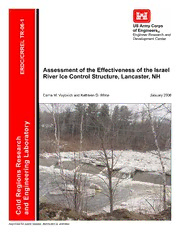
DTIC ADA442900: Assessment of the Effectiveness of the Israel River Ice Control Structure, Lancaster, NH
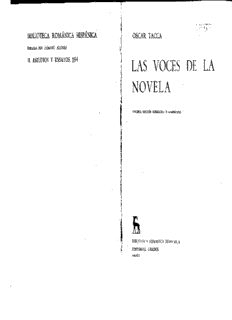
las voces de la novela
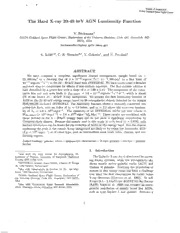
NASA Technical Reports Server (NTRS) 20060013221: The Hard X-ray 20-40 keV AGN Luminosity Function
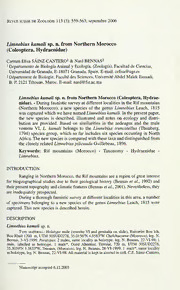
Limnebius kamali sp. n. from Northern Morocco (Coleoptera, Hydraenidae)

Explaining Economic Backwardness: Post-1945 Polish Historians on Eastern Europe

Elizabeth City State University Catalog
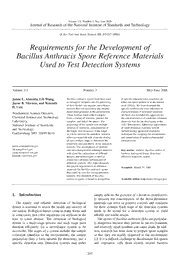
DTIC ADA509405: Requirements for the Development of Bacillus Anthracis Spore Reference Materials Used to Test Detection Systems
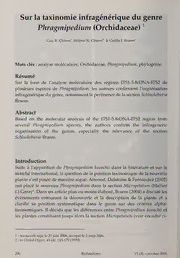
Sur la taxinomie infragénérique du genre Phragmipedium (Orchidaceae)
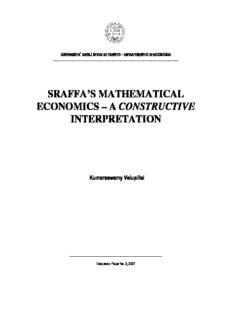
sraffa's mathematical economics – a constructive interpretation

Sociological Forum 2006: Vol 21 Index
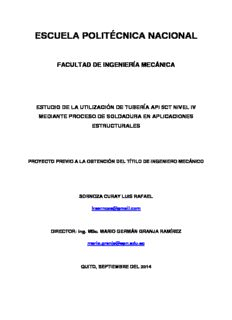
capítulo 2 análisis de soldabilidad de tubería api 5ct
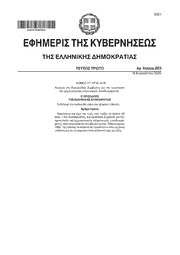
Greek Government Gazette: Part 1, 2005 no. 203
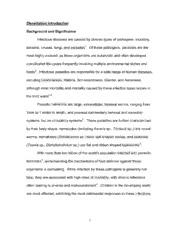
DTIC ADA459045: Characterization and Function of the Inflammatory Response to Infection by a Gastrointestinal Nematode Parasite: New Insights into Protective Th2 Responses
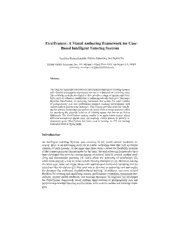
DTIC ADA454585: FlexiTrainer: A Visual Authoring Framework for Case-Based Intelligent Tutoring Systems
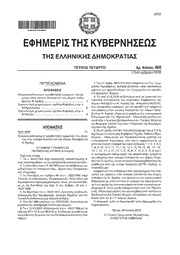
Greek Government Gazette: Part 4, 2005 no. 906
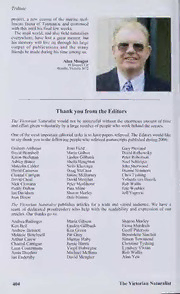
Thank You from the Editors

Bursa Ticaret ve Sanayi Odası

